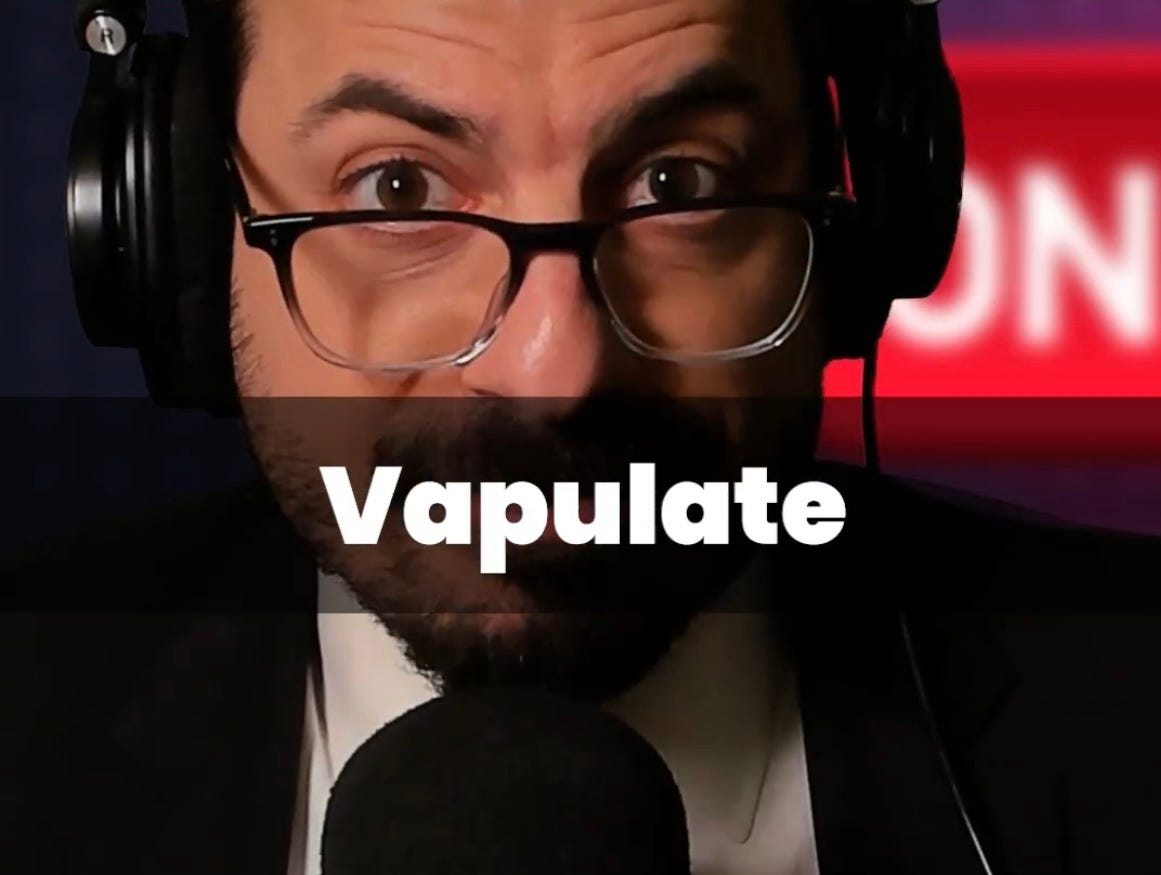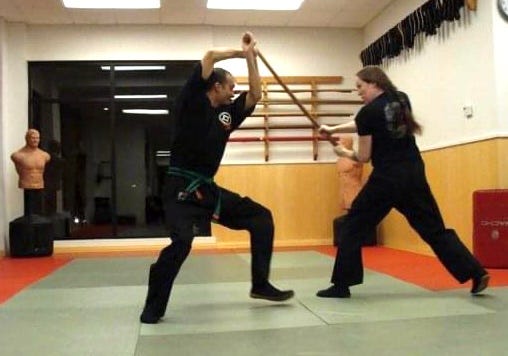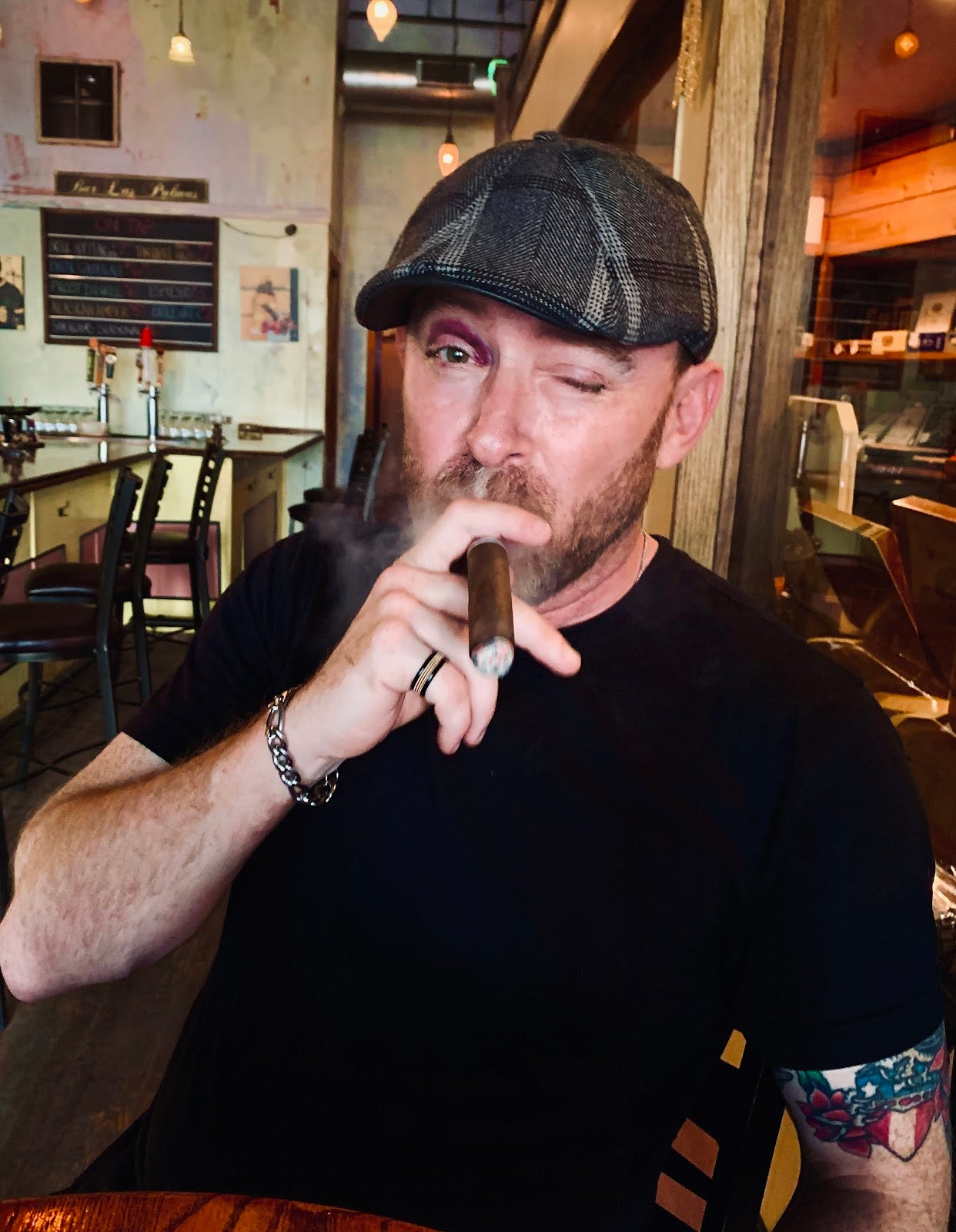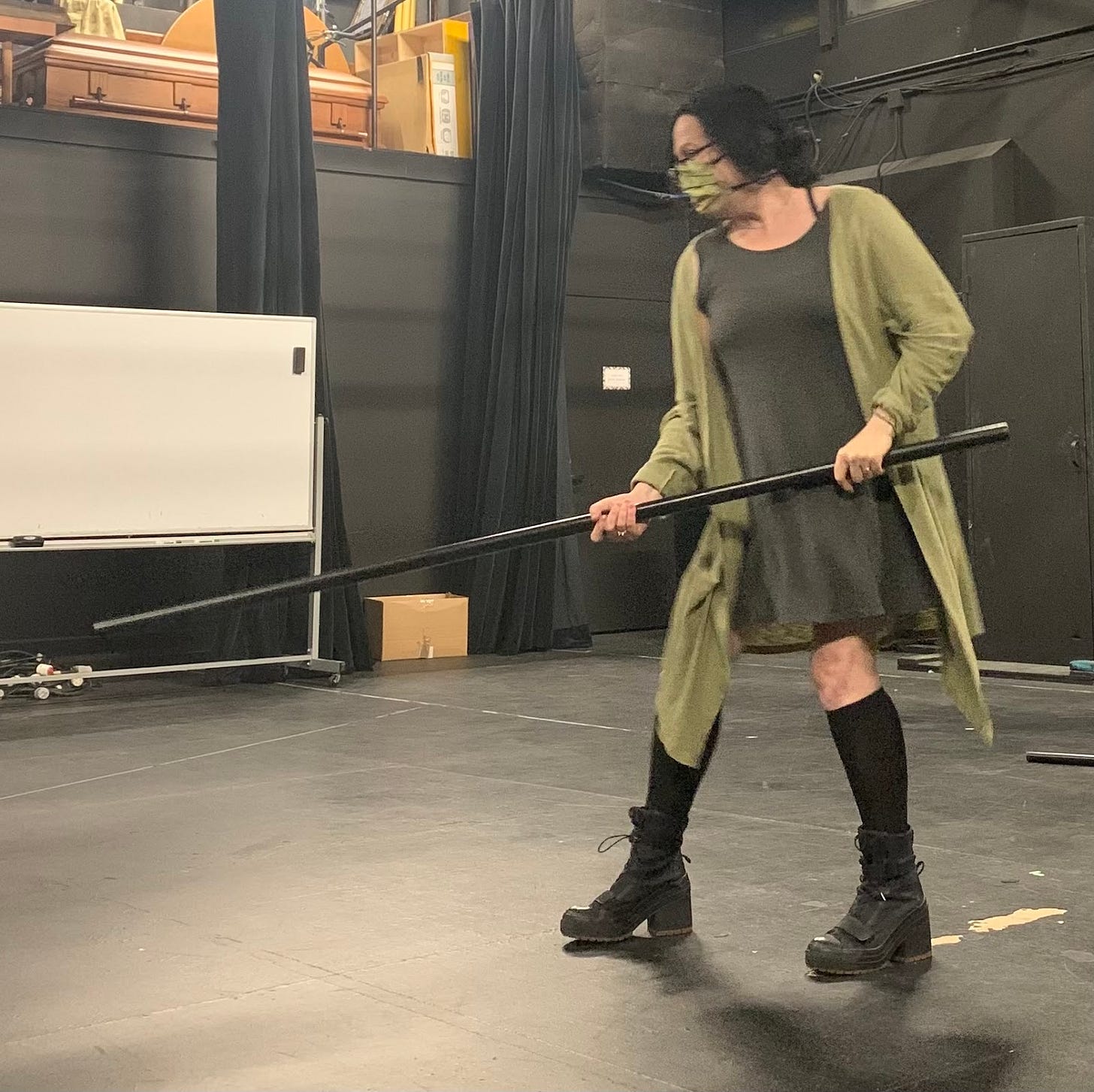RE-POST-IT NOTE: I am reposting older essays this week, as I am on vacation and am not churning out fresh essays for you for a few days. As much as I love you. I also have not yet concluded the current poll, which will dictate what the next word will be (though it’s been sitting at a 4-way tie for quite some time). So. This is my vocab word re-post (riposte?) which I’m re-sharing today because it’s a lot of what the current couple of Saturday Morning Serial chapters are all about. In fact, I think there are a couple chunks out of those chapters here in this essay, too. I hope you continue to enjoy.

Vapulate
This word is obsolete, apparently, like so many of my fun vocab words have been. Methinks we should bring back a bunch of them, like Popination. And ‘methinks.’
Its definition? To flog or whip, beat or strike. Does this include weapons? I’m a say yes, because of the flogging and whipping and the ouch ouch it hurts me…* I wanted to write about this word because it brings to mind so many stories of my life and training in and love of various combat arts. Also that one burlesque duet I performed a few times with a good friend, stage name of Mordecai Mordecom. It was a duet to the Black Keys’ slapping hit Lonely Boy (see what I did there). The premise was that I was getting ready to go out, and was taking too long—my dance partner came out onstage, fully dressed, as I sat in a chair down center, putting on my makeup. Each time the chorus echoed “I’ve got a girl that keeps me waiting” he’d indicate that we were running late, etc. Then he begins his own striptease, as he decides staying home is a better plan. So it ends up as a sort of inverse striptease, where he strips down and I get dressed in tandem. But one of my favorite moves in that dance was when he whipped off his belt, folded it to make a loud smacking sound, and then struck it loudly across my thigh. So much fun, very sexy, and it always made the audience gasp.
*Can you name the animated character that says this quote? It’s kind of an obscure one.
I’m a Fighter, Not a Lover
Though my parents never had much money to speak of, especially not anything extra, dance was a fundamentally important part of my life, because it had been my mother’s life focus for so long. Because of this, somehow she’d always come up with enough to pay for me to take one or at most two dance classes at the prestigious Colorado Dance Festival each summer. This festival was a very cool thing, and a big deal: it drew dance biggies from all over, which meant that between the ages of 14 and 16, I took several classes from stars in all kinds of movement arts. One year, it was Physical Comedy with none other than legendary modern clown Bill Irwin. I didn’t know who he was when I entered the class, only that I very much wanted to be a virtuoso clown myself. By the end of the intensive course, he was an idol and a highlight of my theatrical life still is from that class, when he and his partner-in-clown showed us some rough cuts of what would later be famous Broadway clown show, Fool Moon.
I mentioned Jonathan Gottschall’s book The Professor in the Cage and its premise briefly in ‘Discipline’, but it’s worth getting into again here. I am myself a fan of fighting arts and those arts that can hurt. I came to these arts from dance, or maybe through dance? Hard to say. But. Pain has long been a source of pleasure for me (Ssh. But also yes), and my practice in the arts of vapulating are a large part of that. Gottschall observes how unusual it is for women to have this hankering, though of course he honors those many exceptions who he feels prove the rule. But it does still smack of a man’s world (there I go again), and to this day my prowess in even theatrical combat as a woman is more unusual than not.
Pain is Gain
“A champion is someone who gets up when he can’t.” Legendary boxer Jack Dempsey’s words echo down the decades. This is what it means to train, or so I learned as truth as I trained in my several combat arts as a young woman. Especially as the only girl training in traditionally masculine systems, there was no excuse for anything less than my all. More than my all—I was required to be the best, strongest, toughest. Better than all the men. I had to be able to take it, and get back up. Every time.
Martial arts of any kind, in practice or performance and also in training, are a process of pain. Dance actually is too—though the end result on stage or screen isn’t the obvious violence that boxing and other martial arts are, just ask any professional level dancer, especially those in particularly punishing styles like ballet or aerial, and you’ll hear some pretty gnarly body horror stories. In my stint as a dancer in Frequent Flyers Productions, an aerial dance troupe, as much as in my later martial arts dojo, a gleeful showing off of bruises, rope burns, blisters and the like was a celebration of our physical prowess and accomplishments of the day. Macho posturing? Yeah, pretty much. And why not?
It’s a fetish of sorts: a cultural one more than a personal one. The fetishization of the tough guy, of taking pain without showing distress, or damage. Gottschall returns to this question of why we* love it over and over as he moves us through his process of training for the UFC in The Professor in the Cage: “This invites an obvious question: if it hurts so bad and sucks so much, why do we do it?” Gottschall answers his own question right after asking it, on the next page. He sums it up in a so-bad-it’s-good conclusion:
“…the blubbery, congested sensation of incipient middle age gives way, and I feel young again, and strong. … I leave the gym feeling so awake, my whole system revving with something purer than a runner’s high” (130-131).
Purer than your basic athletic dopamine surge, that is. Why is the pain from the violence of boxing purer than, say, the pain of long-distance running? Something about the valiant violence echoes in a cultural admiration of the rugged pioneer who endures unthinkable trials, gets up from unendurable pain, and is therefore holy. It’s the fetish of the enduring cowboy, the suffering saint, the Savior himself. Without suffering, he’s no hero. If he complains or becomes weakened from surviving said suffering, he’s not worthy of the heroic name.
* Actually, Gottschall avers that it’s really only men that love fighting, violence, and pain. I’d disagree just because of my gender and my affiliation with exactly what he describes, but then. Here I am pondering this, aren’t I. And I am one of the guys, so. Is it that simple, do you think?
Unlike my fellow sword bros or dojo buddies, I was never that kid who got the ninja costume from the catalog in the back of the comic book, or watched all the action movies pretending to be Bruce Lee. I didn’t like any of that fighty stuff when I was a kid—I was a dancer and then an actor. I didn’t make swords out of sticks, or practice high kicks in the playground. Action movies and especially horror movies were not to my taste. But then, I took one class at the end of my BFA program, for no reason at all, fell in love with fighting, and the rest is history. Getting that job as a fighter at the Renaissance Festival (which I relate briefly in my Problematic Badass Female Tropes series #6: One of the Guys), not only meant that I was in hard training and excellent practice, but I was going through another process: I was enduring a coming of age ritual. But I was going through a masculine ritual, not separated out from my comrades as they learned what it was to be a man and a fighter. In a weird way, that first summer with its savage hazing and its tough guy physicality and its dirt and sweat and aggressive sexual posturing (and aggressive sexual pursuits), I came of age as a man.
The rough and tumble, high-fiving, potty-mouthed camaraderie of that group I called the Band of Young Men* made me feel for the first time like I belonged. I wasn’t the only nerd in the group, I wasn’t the smartest and therefore targeted for that. I was on equal footing with the Band—the five of us were equally talented, boisterous, witty, pretty, strong, and because of that, tight. Brothers in arms share a particular intimacy: even though all the combat was theatrical in this situation, the training and practice was real—we were training and fighting hard, side by side, supporting each other, hazing being a test of loyalty and mettle, a signal that you could hang, that you could be trusted. I’d been tested, and I passed. I was one of them.
*After the indigenous folk motif of the wandering group of young men, often werewolves, shapeshifters, in that trembling transition between boy and man, a pack of priapic trouble.
I also wasn’t a romantic interest to any of the men, which further cemented my role not as their token chick, but as one of them. The peer pressure, therefore, was like a pressure cooker—I was one of the best of the best of the boys, and I wouldn’t dare let them down. I learned, as so many young men do, to perform masculinity to such a height that it wouldn’t be questioned. Bros before hos, and Zuko was a bro, and hypermasculinity is one hell of a drug.

So I Married a Ninja
I mention my martial arts training in a quick summary back in the vocab word piece ‘Scoop’, and it’s basically this: I studied classical Japanese martial arts for many years starting in the late ‘90s through around 2010 I believe. My training spanned two different dojos, one after the other. I achieved a black belt equivalency at the first place (headed by my now-ex husband, which is a whole chapter in my memoir and a whole ‘nother story itself). And I got a standard shodan (1st degree black belt) at the second school. The first school shut down because the sensei (my husband) was a malignant narcissist, but also because we ran out of money to run it. The second dojo was…well I say ‘was’ but I think it’s actually still in existence in some fashion, though I haven’t checked. What I do know is that the husband of the owner of that school was a different kind of narcissist who, very soon after I left, went to jail for a crime which I don’t feel I should describe here. Suffice to say it’s a predatory type problem that’s all too prevalent in martial arts schools that encourage youth attendees along with toxic masculinity. It’s… you get the picture, I think; let’s move on.
Because of my martial arts training, even though I haven’t been in active training or even close to fighting trim for several years now, I still include 100 sword cuts in my morning light workouts, and I do still have the capability to defend myself if needed. I also enjoy a non-rigorous sparring every so often for fun, though the Western boxing that my partner knows so well and the old school Japanese art that’s in my body’s memory don’t mix all that well. It’s fun, but the styles are so different that it just gets ridiculous—me with my upright posture and constant 45 degree angled evasions against the active footwork, head-guarded, almost hunched-over boxer throwing hard hooks right through it. And if you manage to get me on the ground? Forget about it, I’m finished, especially against even the rudiments of the Brazilian version of jujutsu. But engaging physically like that, with controlled violence, with my romantic partner, is …well I was going to say it’s hot, and it is, but it’s much deeper than that. It’s a profound connection, a physical and emotional intimacy with another person that you don’t get from anything else. And I mean anything.

Did I ever tell you about that time I kicked a guy off the bus? It was on one of those big commuter buses that make frequent trips between Denver and Boulder. It was at night, so after dark, but not very late, and it was in the Before Times, so the bus was packed full of people of multiple ages, every seat and every standing space in the aisle occupied.From this weary crowd began something of a drunken rant. It was coming from a smallish man, leathery skinned, obviously intoxicated, and had the air (literally and figuratively) of someone who pretty much never wasn’t so. He looked also as though he slept rough a lot of the time. So, bus riders know people like that—the best thing to do, we know from experience, is just to ignore. However.
The drunk guy starts getting louder, harder to ignore, and then he starts yelling at this kid, sitting at a window seat, his father right beside him on the aisle. The kid is about 9 or 10, and his dad is looking up at this drunk guy who’s leaning over him toward his child, getting louder, and I saw something change in the dad’s face. I knew right then. That man was about to commit violence against this person in front of his kid.
I pushed my way down the crowded aisle, snatched the drunk guy by the scruff. Just his shirt, between the shoulder blades. I then secured his right arm in the way I was taught in the bodyguarding technique classes I had taken at the second dojo. Somehow, the sardinelike crowd was able to make way for me, and the quaking young bus driver was just pulling over to a safe spot near a sidewalk, as we were nowhere near a bus stop at that point. As I gently but firmly made the drunk walk where he needed to go, I said quietly, “It’s time for you to go, sir.”
The drunk incoherently protested but couldn’t do anything about what was happening. He grabbed one of the bus numbers from the wall behind the driver as I guided him down the stairs and out the door, made sure he wasn’t wandering into traffic, and came back inside. The bus went on to its next destination. The crowded crowd was silent.
I nodded to the father. He stared straight ahead, rigid, jaw clenched, and didn’t acknowledge me. Nobody said a word. Until one man, near the front, said in a high and frightened voice, “Thank you. Very much.”
“You’re welcome,” I replied. The bus driver looked like he was breathing again for the first time since the trip had begun.

Is a love of fighting nature or is it nurture? Is Gottschall correct, that all men love fighting to a core and visceral degree? Or is fighting genderless? Or am I just genderfluid enough that I’m a dude enough to like fighting? I wasn’t a little boy that played with weaponry, I was a little girl that took dance classes; though I did have Hot Wheels which I liked more than my Barbies. And of course, it’s been debunked (or is that bunked?) that literally everything is both a result of our environment and our biology. There’s no separating them, apparently. Ehh, I won’t fight it.




So I’m the guy in the photo with the shiner and can confirm that was it consensually given and safely received. And for the record, no matter what she says, it is actually VERY hard to get a hook around Jenn’s guard.
Wow, this is awesome! So I don’t know the answer to the question you pose about all men liking fighting viscerally, but I have met many men like myself who literally had their lives “saved” by having their violent tendencies channeled into a non-destructive outlet, either a violent sport (for most it was tackle football) or boxing or a martial art. I know that I would have been in jail if not for the outlet that football gave to my pent up aggression (I mean, come on…I got to run into people at full speed, lift them in the air and slam them on the ground as hard as I could…and this was a good thing!). I think part of the reason Fight Club resonated with men of my generation was we were losing these outlets as we aged, but the impulses were still there. Anyway, you captured something true here that a lot of society doesn’t like to admit or talk about anymore, if ever.
And by the way I love the word “methinks” and use it every chance I get!